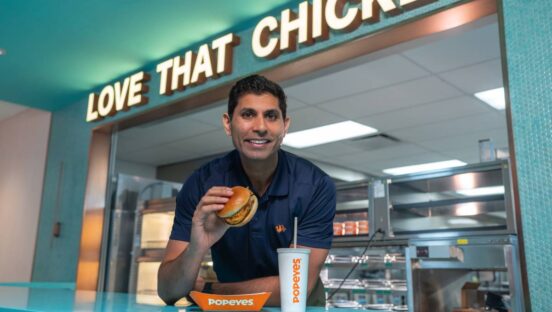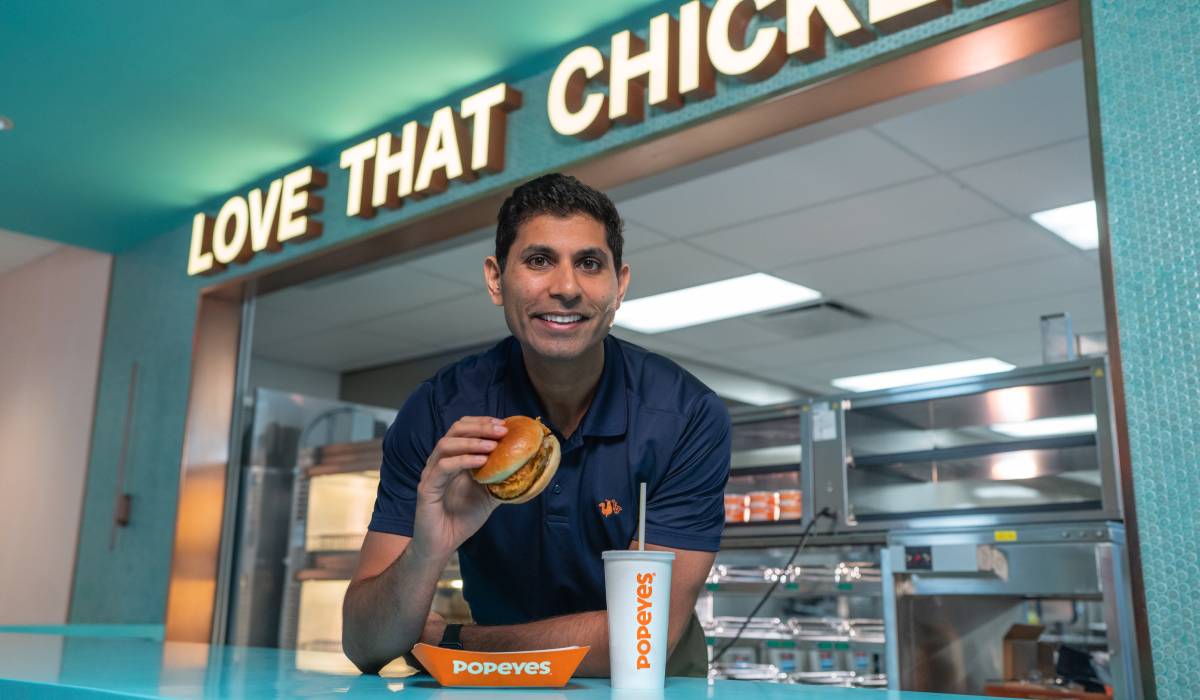Brand president Sami Siddiqui likes to say Popeyes is “50 years young.” While that might sound like something people profess at a weekend barbecue, there’s real weight behind it.
In the five decades since Alvin C. Copeland Sr. opened “Chicken on the Run” in the New Orleans suburb of Arabi, an area with just over 4,500 residents as of 2020, you could argue no three-year stretch has been more active or formative for the legacy brand. Perhaps only Copeland’s decision, after several months of tepid sales, to reopen the restaurant as “Popeyes”—named after Popeye Doyle from the 1971 film “The French Connection”—and switch from Southern-fried chicken to spicy, New Orleans style, compares.
And this time, everything started by breaking the internet, Siddiqui says.
For two years, chefs in Popeyes’ Miami test kitchen quietly developed a buttermilk batter and tracked down a special flour to create a crunchy texture intended for a chicken sandwich. It used the same buttery topping found on biscuits to coat the bun and cut barrel-cured pickles thicker than competitors’.
Popeyes’ brass knew they were sitting on the biggest product launch in 30 years. Yet could the chain create buzz to match it?
By now, few customers, industry pundits, or anybody on the grid, isn’t familiar with what came next. Popeyes sparked a social media battle with Chick-fil-A in August 2019 and the sandwich sold out in two weeks. The brand moved as many in 14 days as it expected to from August to September. According to mobile location analytics platform Placer.ai, traffic to Popeyes branches nationwide on August 20 and 21, rose a staggering 67.6 and 103.3 percent, respectively, above the company’s summer baseline. Placer.ai summed it up simply: “This is an outrageously high peak.”
READ MORE:
Popeyes Unveils New Digital-Centric Design as Growth Ramps Up
Popeyes Gears Up for Another Banner Year
Apex Marketing Group estimated Popeyes garnered $23 million in equivalent ad value across digital, print, social, TV, and radio in just the first 11 days (this number would eventually get to $65 million). More than 16 tweets per minute were fired off during the first month. Some restaurants sold 1,000 chicken sandwiches per day. Ad Age said Popeyes’ Chick-fil-A tweet earned more than 20 billion impressions worth some $220 million. Before the year closed, Popeyes more than doubled its Twitter following and generated enough word-of-mouth momentum to cancel an ad campaign scheduled for Labor Day.
What’s less known, however, is the effort actually began with a phone call. Kim Sánchez, owner of Sweet Dixie Kitchen, a trendy brunch spot in Long Beach, California, thought Popeyes was ringing to let her know she was being sued. In 2017, the restaurant grabbed notorious headlines when it got caught serving Popeyes chicken and presenting it as its own. Sánchez was even spotted walking through the front door with Popeyes bags.
But Popeyes wasn’t threatening legal action. In a move that would come to illustrate the chain’s stance on the subject, it asked Sweet Dixie Kitchen to introduce the product. The idea being, “we promise our new sandwich is worth the visit.”
That was always the meat inside the bun, so to speak. Take a taste test and see who comes out on top. Over the next two years, the same company line darted in from every corner of the industry. Zaxby’s, McDonald’s, even Taco Bell (if you consider a “Sandwich Taco” a sandwich) created new offerings to enter the so-called “Chicken Sandwich Wars.” And it always came back to Popeyes.
By February 2021, the company revealed one of the more eye-popping statistics in quick-service history: From pre-chicken sandwich to present, average-unit volumes rose $400,000 to $1.8 million. Global crisis notwithstanding.
“I think what people often forget,” Siddiqui says, “is just a few months after the sandwich, COVID hit.”
From 2019 to 2020, Popeyes posted four of the best quarterly same-store sales increases in the quick-service industry over the last 10 years. One example—Q4 2019, when comps skyrocketed 37.9 percent.
Amy Alarcon, Popeyes VP of culinary innovation, who has been with the brand since 2007, says the chicken sandwich “certainly changed the landscape for us internally as well.”
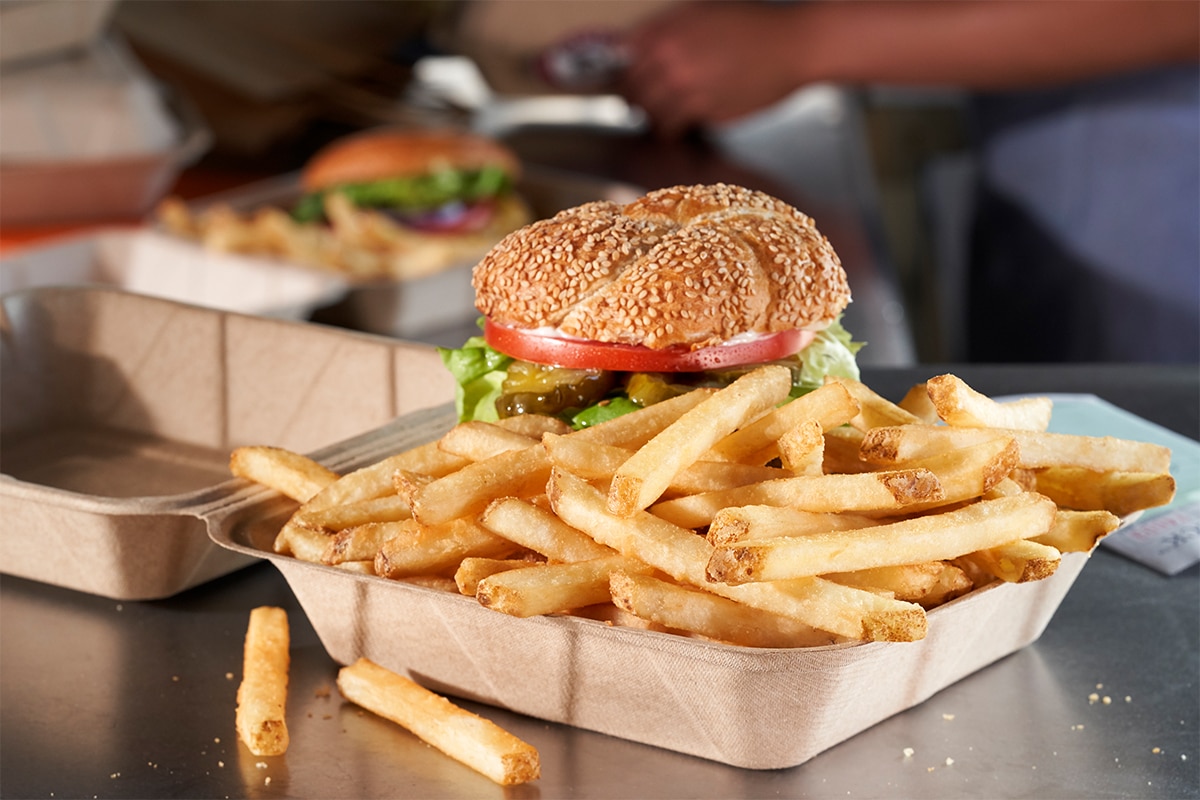
“We kind of instigated this shift where almost everyone in [quick service] suddenly changed how they were doing their chicken sandwich,” she says. “We like to think we set really high standards for ourselves and it was flattering that we established a standard for the industry.”
More recently, focus has turned to what Popeyes’ second act might look like. How can it leverage an indelible moment in fast-food history into something more lasting?
As the brand became, “quote end quote hot,” Siddiqui says, investor and franchisee demand popped across the globe. Prospective operators wanted in. Current ones wanted more. In fact, for many years, the brand didn’t have new franchisees entering the system. Today, there’s a waiting list, he says.
Siddiqui, formerly president of parent company Restaurant Brand International’s Asia-Pacific region before joining Popeyes in September 2020, led the launch of the brand in China and the Philippines. In both cases, he says, lines of four, five, even seven hours, snaked around openings. “I think part of that—much of that—is rooted in having an unbeatable product,” he says. “But also, a lot of the momentum we’ve seen here [in the U.S.].”
It’s a simple formula with wide-ranging implications: as Popeyes turns 50, people are talking about the brand more than ever.
In 2021, it crossed the 3,000-unit mark in the U.S. and Canada. Popeyes signed more development agreements around the world than at any other point in its history. It’s headed to India, the U.K., Saudi Arabia, Romania, France, South Korea, and, naturally, to more markets in the U.S., Mexico, and RBI’s Canadian base.
In guest surveys, which the brand hosts routinely, it asks consumers what their barriers to trial consideration for Popeyes are. “And what they always say is … actually convenience,” he says. “There’s just not a Popeyes close enough to me. And we think that is a huge opportunity.”
“I view that as my obligation—to build more Popeyes,” Siddiqui adds.
Just charting overseas, there are “a couple hundred” Popeyes in Asia today. Twenty-six percent of KFC’s total system sales stem from China alone. Yum!’s chicken giant has 26,934 restaurants, and only 3,953 of those are in the U.S.
“I think that highlights what the whitespace opportunity is out there,” Siddiqui says.
In many ways, Popeyes’ chicken sandwich gave RBI a trigger point it had been searching for in regard to the brand. On March 27, 2017, RBI acquired Popeyes for $1.8 billion. It was a significant move because it secured the Burger King and Tim Hortons owner (it now directs Firehouse Subs as well) a serious stake in chicken.
From acquisition to 2020, RBI posted cumulative net restaurant growth of 27 percent at Popeyes. As noted, 2021 represented the highest number of openings yet as the brand closed the calendar with 3,705 restaurants globally—a net of 254 stores, or unit growth of 7.4 percent. That total breaks down to 2,754 U.S. locations (net of 146 restaurants) and 951 international outlets (net of 108 restaurants).
“We’re just scratching the surface on opportunities for Popeyes,” RBI CEO Jose Cil said in February. “And I firmly believe that the brand is poised to become one of the fastest growing in the industry.”
Come year-end 2020, Popeyes exited as the country’s second-largest chicken chain, just ahead of Chick-fil-A and about 1,300 units behind KFC. After Wingstop, which had more than 1,500 stores and continues to grow, recently upping its global target to 7,000 total stores, Church’s Chicken (913 units), Zaxby’s (905), and Bojangles (758) neared the three-digit club. Raising Cane’s (509) and El Pollo Loco (482) were climbing, too.
But as crowded as this category has stuffed, Siddiqui says, Popeyes doesn’t have any trouble standing out. It’s as much a race for access as anything else.
“What we’re trying to do when we’re in that conversation is really be authentic to who we are,” Siddiqui says. “And what does that mean? It means our Louisiana roots. Our culinary mastery. And, really, this 50-year brand’s roots.”
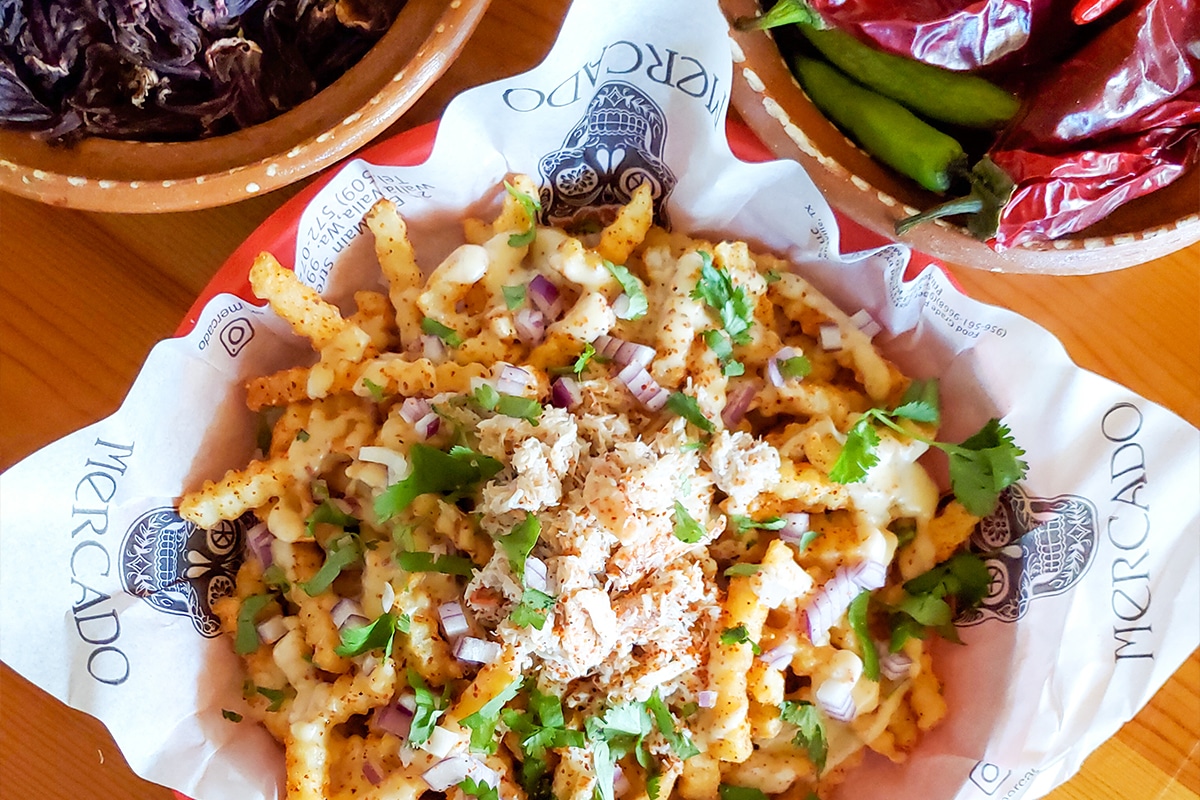 [image source_ID=”132173″]
[image source_ID=”132173″]
During COVID, opportunities for multi-channel business flashed for the brand, like it did for so many other restaurant chains. Siddiqui says internal insight, from the outset, focused on the comfort-food movement taking hold. Beyond pizza, Chinese cuisine and chicken are the two most commonly ordered products for home delivery, he says. Popeyes leaned into the notion and, in particular, the reality it could package chicken for family occasions. Party size increased and Popeyes’ business “thrived as the world moved toward eating at home,” Siddiqui says.
The brand got on all delivery aggregator platforms and built out its own mobile platform so its app and, ultimately, loyalty program could be active during COVID.
RBI, as a company, generated more than $10 billion in global digital sales in 2021, or more than 30 percent of its total systemwide take. Just four years ago, the company had virtually no digital sales in most of its major markets. Popeyes’ U.S. fleet reported 16 percent of sales from digital channels in Q4 2021.
Accentuating food and digital trends, coupled with the chicken sandwich draw, is what helped Popeyes produce two of the most historic years it’s had, Siddiqui says.
How Popeyes builds on it, from a physical angle, is changing, too. The brand is looking at smaller footprints. Ghost kitchens. Digital-only formats. In South Florida (RBI also has a base in Miami), there was a trade area where Popeyes didn’t have any restaurants. Why? No availability for a large, freestanding restaurants with a drive-thru—a point that would have slammed the door shut before.
Now, however, Popeyes has a digital-only concept with kiosks and no registers, and delivery, mobile order and pay at the ready. And in March, the chain reopened its historical Canal Street store in New Orleans, which marked the first unit in the U.S. built with a modernized layout inside and out, including self-order kiosks, order-ready boards, and dedicated areas for digital order pickup. “That really streamlines the digital experience for our guests,” Siddiqui says. “I think it’s those types of formats that we’ve now become a lot more flexible with. Those are going to be the future in terms of how we deliver Popeyes to our guests. It’s not going to be all digital formats. It’s not going to be all ghost kitchens. It’s going to be a balance of everything.”
While this unfolds, Alarcon and the culinary team aren’t going to rest on Popeyes’ chicken sandwich laurels. Take the brand’s nuggets, which launched nationwide in late July. Popeyes released them with a cease-fire campaign that called for an end to the Chicken Sandwich Wars. The Popeyes Foundation purchased the cash equivalent of a million nuggets from the chain, as well as competing brands McDonald’s, Wendy’s, Chick-fil-A, and Burger King, and donated funds to Second Harvest Food Bank of Greater New Orleans & Acadiana.
Notably, the nuggets came from the same recipe as the chicken sandwich, only in “poppable pieces.” The innovation was in the works since the introduction of the former.
“A lot of that was capturing the parts of the chicken sandwich that we all love, which was the chicken itself,” Alarcon says. “I mean, everything about that sandwich is amazing, but taking the chicken and the breading and then creating that as a vehicle for sauce.”
Nuggets had launched previously as LTOs, yet never with any real emphasis behind it. “I use the nuggets as an example to say the chicken sandwich may have driven a lot of traffic and put us on the map, in some sense,” Siddiqui says. “But I think what we also saw was there were other categories where we weren’t playing.” In other terms, the chicken sandwich opened the flood gates, like with bone-in chicken and seafood trial. “People come into our restaurants and they’re not just buying the chicken sandwich,” Siddiqui says.
The nuggets, which were an ideal launch for kids and customers not focused on heat, then “married over beautifully,” Alarcon adds, into a partnership with Megan Thee Stallion, including a signature hot sauce and merchandise line. The Grammy Award-winning rapper, who Siddiqui says was intimately involved from day one, actually signed a franchise deal with Popeyes to open up to five restaurants.
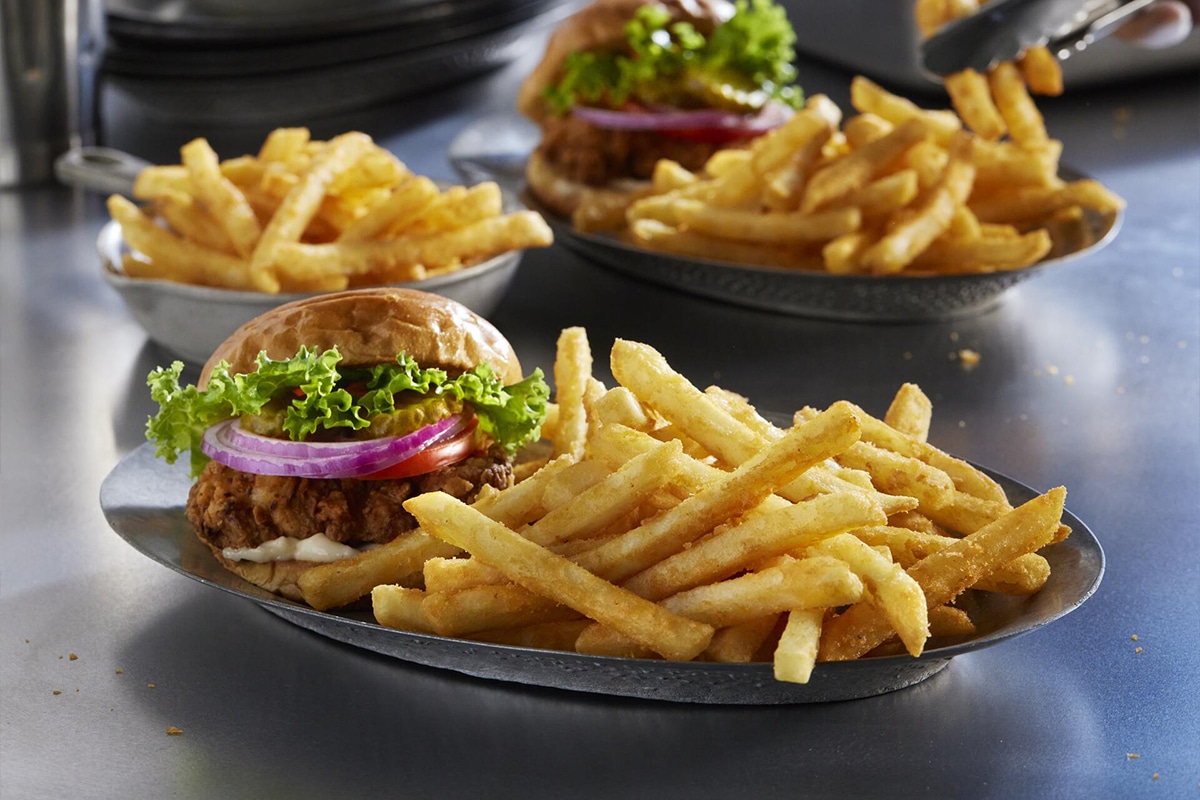
Cil said the initiatives played an important role in attracting new demographics (just as the sandwich itself once did), specifically Gen Z and millennials, as well as expanding the brand’s p.m. daypart. Going back, market intelligence firm Numerator released data in the infant stages of the chicken sandwich that showed the social media-fueled item not only brought new visitors to the chain, but it also successfully pulled guests away from competitors. More than half (51 percent) of non-buyers during the shortage period—when Popeyes ran out of supply—said they went to Popeyes with the intent to buy the sandwich. About 30 percent of Popeyes’ new chicken sandwich fans were purchasing crispy chicken sandwiches at other quick serves in the weeks prior to trying it. So the task becomes how to reward and keep the interest of now-loyal users, and continue to open the funnel for fresh guests to try Popeyes. Homestyle Mac & Cheese was one example, Alarcon says. It arrived in November, topped with shredded cheddar cheese and baked in the oven. Between the nuggets, Megan Thee Stallion Hottie Sauce, and mac innovation, Alarcon says 2021 featured “a lot of firsts” for the brand. And it’s likely a sign of things to come.
But as much new news as Popeyes wants to create, it always returns to the core, which is something Alarcon says fits the 50-year anniversary vibe. Recently, she pulled up the original menu from Popeyes.
“The thing to think about in 1972 was what made the brand famous was spicy—spicy chicken,” she says. “And you think about how we kind of created this space in the industry that now everyone is leaning into, it’s part of our regular dinner and lunch occasions. It’s such a normalized thing now that I like to think that we did it best. And we did it before anybody else really brought spicy forward and made it a national treasure.”
“I think we’re just building on top of that foundation,” Siddiqui says of Popeyes history. “I think we really became part of that pop culture conversation [with the chicken sandwich]. What we’re trying to do when we’re in that conversation is really be authentic to who we are. And what does that mean? It means our Louisiana roots. Our culinary mastery. And, really, this 50-year brand’s roots.”
Popeyes has some celebrations cooked up for Year 50, but couldn’t share details just yet. In March, it brought franchisees together in New Orleans for a three-day party to not only “ground ourselves in the heritage,” Siddiqui says, “but to also talk about where we go from here over the next 50 years.”
Part of the conversation surrounds systems and ensuring the brand remains guest-centric while also striving to become more efficient. Alarcon says Popeyes’ blueprint used to be 70 percent new product development, 30 percent looking at maintenance and how to handle existing items. It’s shifted to where 50 percent of time is now dedicated to looking at what Popeyes currently sells and trying to find ways to make it easier to handle product, and yet still maintain the quality you get from hand battering and breading. “I don’t think we’ll ever walk away from that,” she says.
“As you think about that process and the love and care that goes into that prep process, it is unlike anything else and that’s what really differentiates us,” Siddiqui continues. “That’s what keeps our guests coming back and ultimately that’s what’s going to propel the growth of this brand.”
Broadly, the key will be to own life as a national chicken chain with no shortage of buzz behind it. The days of being a regional, best-kept secret are gone. “The last three years are the beginning of something really special for the brand,” Siddiqui says.

